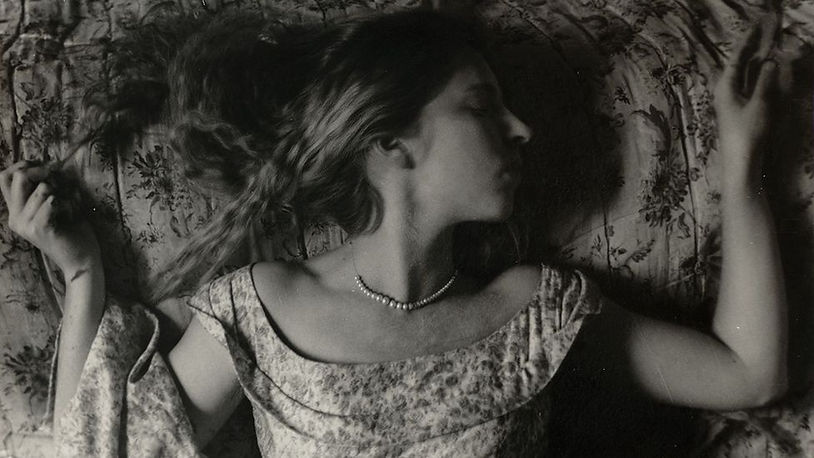By: Chloe Huang
In a faded black and white print, there is a woman. She hides under a table, showing only long limbs. On the table, highlighted by a sliver of sunlight, lies a single flower. What does this photograph mean? Dozens of curators have tried to answer this question, yet this photograph’s meaning remains elusive. Such is the work of Francesca Woodman.
Francesca Woodman was born in 1958 in Denver, Colorado, to an artistic family. Her mother was a ceramicist and her father painted. Francesca, however, chose photography as her artistic medium. She started taking photos when she was just a teenager and never looked back. In her short lifetime, she would take more than 800 photographs.
Francesca quickly proved to be a prodigy. One of her earliest photographs, Self-Portrait at 13, depicts her wearing a sweater. It looks by all accounts like a normal self-portrait, except her face is completely covered by her unruly mass of hair.
The Woodman family owned a house in Italy and Francesca spent many summers there. Italy greatly impacted her art and her photographs began adopting European influences. Blueprint for a Temple, a semi-realistic tableau, showcases this, containing friends posed as Greek columns supporting a temple that Francesca made by collaging New York apartments.
Francesca’s pieces give off a gothic, mysterious feeling. They are often beautiful yet decrepit, like sunlight dappling dilapidated rooms. She plays with light and movement in her photographs and adopts Victorian “spirit photography” methods. These methods allow her to have blurry figures and apparitions suspended in air in her photographs, giving an almost dreamlike state to her pieces. They seem spontaneous yet were meticulously planned.
Her philosophy towards photography contributed to the surrealist aura her pieces give off. She didn’t think that photography should necessarily show reality, which was what many of her contemporaries thought. Instead, she believed that photographs should be a haven, something that “can offer images as an alternative to everyday life… places for the viewer to dream in.”
Tragically, Francesca committed suicide in January of 1981, at just 22 years old. People remember her for it, but her untimely death should not take away from the genius of her art. Francesca knew that photography was but an illusion, as much about what was left out of the frame as what the photograph contained. This lesson is something we could all do well to learn now. After all, what is social media but a collection of carefully curated photographs displaying an unattainable dream?
Sources:
– BBC: https://s3.amazonaws.com/appforest_uf/f1655670047980x337022493265160900/Francesca%20Woodman_%20The%20eerie%20images%20of%20a%20teenage%20genius%20-%20BBC%20Culture.pdf
– The Guardian: https://www.theguardian.com/artanddesign/2014/aug/31/searching-for-the-real-francesca-woodman











